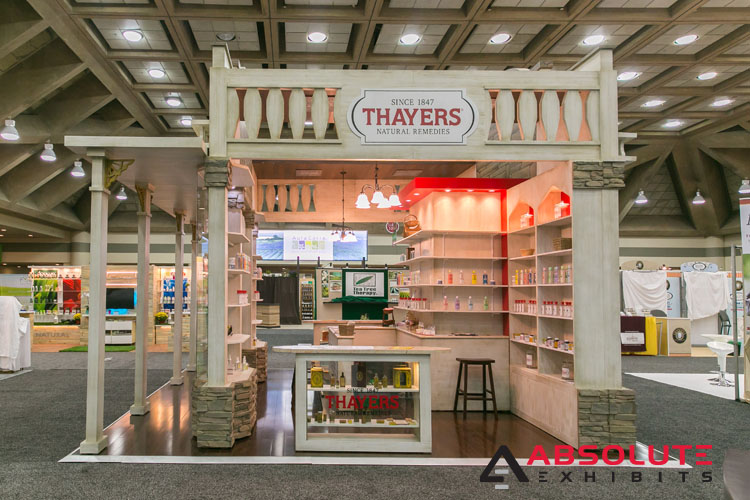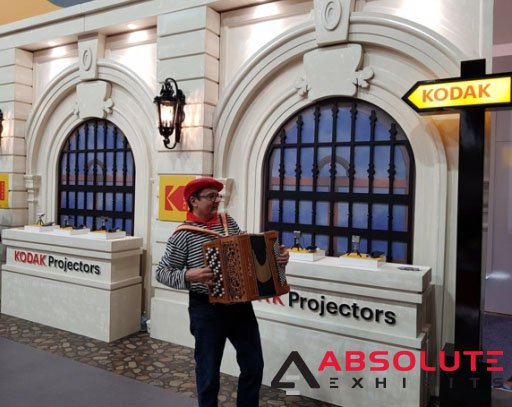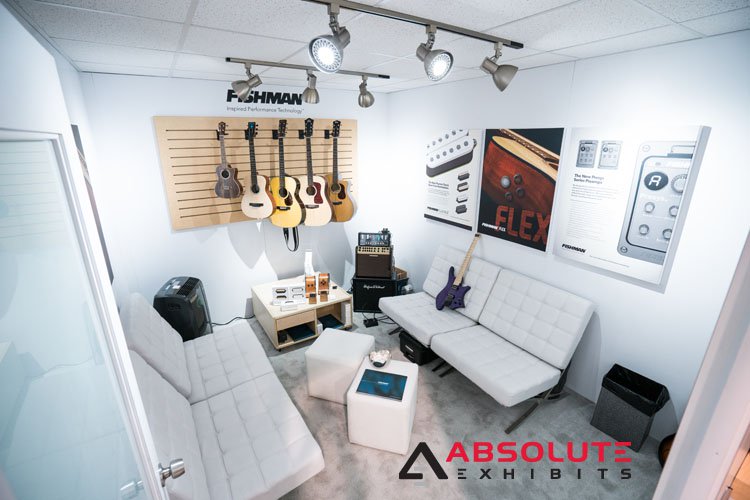As trade shows grow larger, it can become more difficult to capture people’s interest. This means that in addition to great custom exhibit design, brands are now turning to tools such as videos, events, and experiences to gain attention. Interactive exhibits have become the newest trend, offering exhibitors a variety of ways to engage target customers. Using technology, design, and experiences, brands are increasingly making their booths more interactive.
Typically, interactive exhibits fall into 3 categories- immersive, experiential, or multisensory. While these sound like vague marketing terms, each one has a slightly different goal in their interactivity. Consider the ways in which you can gain inspiration for your next show from the following interactive exhibits:
Immersive Interactive Exhibits
In an immersive interactive exhibit, brands seek to draw visitors into their brand story. The point of immersion is to engage with visitors so they experience the brand for themselves.
Examples of these kinds of interactive exhibits include the Thayer’s Natural Remedies exhibit at the Natural Products Expo West. Here, Absolute Exhibits designed an apothecary, typical of the kinds of stores in 1847 that would sell natural remedies. Booth staff brought visitors into their brand story, delighting visitors.

Virtual reality is another great idea for use in interactive exhibits. Simulating environments and showcasing the brand in action can truly pull people into your brand story. An example of this includes TOMS’ “Giving Trip”. Using virtual reality, TOMS is able to show shoppers what it’s like to be a part of their giving trips, making them a part of their brand story. Your brand can use this idea to maximize your impact on the trade show floor.
Experiential Interactive Exhibits
Experiential interactive exhibits differ from immersive interactive exhibits because they seek to offer visitors a personal interaction with the brand. The goal is to create an emotional and personal connection with the brand. Exhibitors often accomplish this with events and interactive designs.
Examples of experiential exhibits include the C+A Global Kodak booth at CES, which sought to evoke a sense of joy and wonder in visitors’ minds. Absolute Exhibits produced a Parisian style backdrop against which mimes and jugglers performed to create this sense of joy. Additional interactive elements included personal Instagram photo boards where people could take pictures against the Parisian style backdrop and share it socially. In this case, C+A Global used both design and artists to establish a personal connection between consumers and the brand.

Multisensory Interactive Exhibits
In comparison to immersive and experiential interactive exhibits, multisensory exhibits seek to engage more than just a visitor’s visual sense. Multisensory interactive exhibits often feature more tactile experiences such as gamification displays, music, and even scents that engage visitors’ other senses.
For example, Absolute Exhibits designed Fishman’s booth at the NAMM show to include a jam pad. This room offered visitors the ability to pick up a guitar and play to experience their guitars and amps. Visitors were invited to both touch and hear the Fishman brand in action. As a result, it was a wildly popular booth, engaging visitors on a deeper level than displaying guitars on a wall.

At HR Tech, many exhibitors used tactile experiences to showcase large software displays. Visitors were offered the ability to play a game, which was incorporated into new interview software. Instead of just showing a demo on the screen, the ability to play the game for themselves was a big hit with visitors.
The world of trade show exhibits is continuing to evolve. In order to stand out from the crowd, exhibitors are getting more interactive to draw visitors to the booth rather than trying to steer them into the booth as they pass by. Consider how these creative ideas can work for your brand at your next show.




